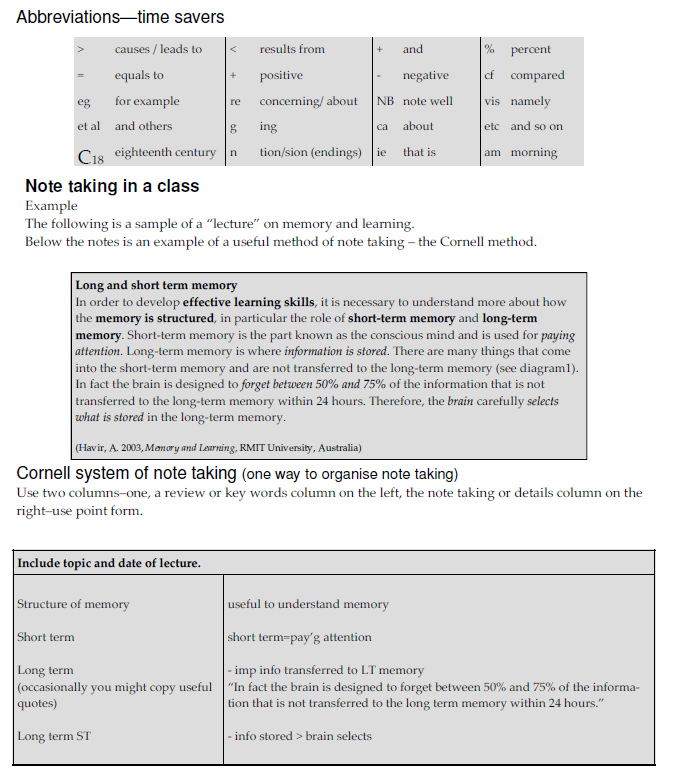Hints for good note taking
Prepare beforehand
• If reading has been set, do it!
• Re-read your previous notes and remind yourself of its content.
• Ask yourself questions like “What do I know about the topic?”, “How does it relate to what was covered last week?”… etc
• Think about the subject of the class and what you know about it.
• Arrive on time.
• Sit near the front and collect any handouts.
Features of a class
Teachers use various strategies to indicate to students what is important.
Introductions and conclusions
Beginnings and endings are vital. The teacher outlines the important points, connects them with the previous and next classes as well as the framework of the whole subject. It is important that you arrive on time!
Repetition and elaboration
Important points are repeated or illustrated with examples.
Linking expressions
Linking expressions direct listeners to new and important ideas:
• Contrast words – however, but, despite, on the other hand, conversely
• Concession words – although, even though, in the light of, given that
• Addition words – also, too, in addition, furthermore
• Emphasis words – importantly, specifically, especially, obviously
• Sequencing words – firstly, secondly, next, finally
• Summary words – in conclusion, to sum up, in summary
• Illustration words – for example, to illustrate, that is
• Reason and result words – consequently, because, therefore
Voice emphasis
Important ideas, words and phrases are emphasised. This is done by saying them more slowly and often more loudly. Gestures and movement may also be used for emphasis.
CREDIT
RMITUniversity Study and Learning Centre


